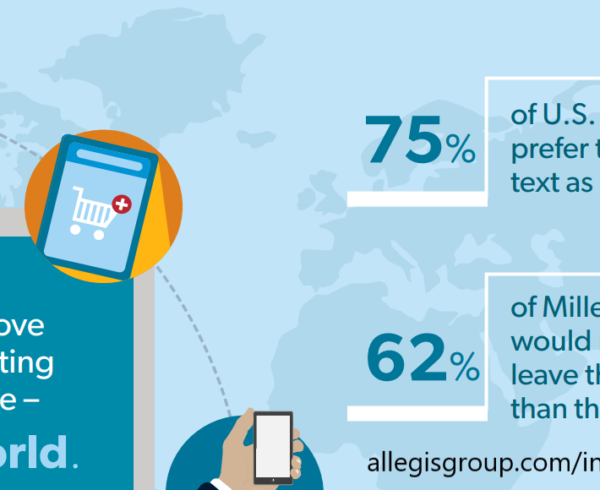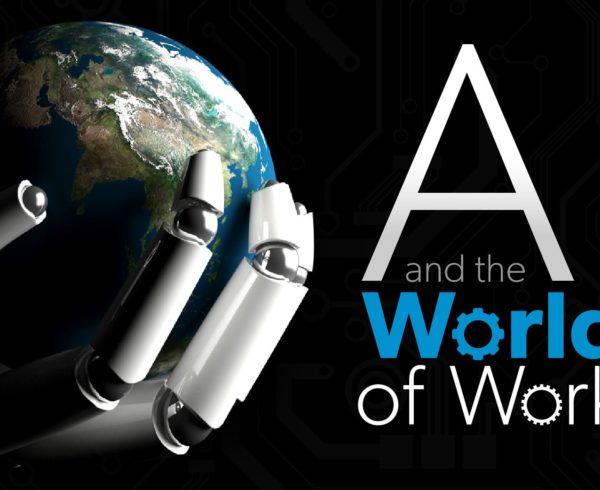Long, long ago, back when job boards ruled the Earth, primitive recruiters and sourcers used to rely on an archaic tactic known as “post and pray.” By simply posting job descriptions on pretty much every career site in existence (and there were many, many of them BLI – that is, before LinkedIn).
It was thought, qualified job applicants would somehow come across these poorly written, ambiguous documents, self-select into beginning the application process and simply appear, as if by magic, right in the workflow of a recruiters’ applicant tracking system. All the recruiter had to do was sit back, wait for their postings to be found, and then move these already qualified, obviously interested candidates directly into the hiring process.
Of course, recruiting has evolved a lot since these times, and this approach sounds, well, stupid to our modern minds. We know that the candidates companies actually want to hire have better things to do then read job descriptions or fill out dozens of ATS fields just to get considered for a job that might or might not be a fit – like working at their real jobs, for instance.
Of course, there remain some recruiters who still rely on this outdated, anachronistic method as their principal strategy (or lack thereof) for candidate acquisition, but these living fossils are becoming increasingly extinct. Probably because that’s not really recruiting, and it doesn’t actually work.
Many had to find this out the hard way – by being unable to build pipelines, find qualified candidates or fill jobs. In a world of survival of the fittest, there’s a reason that those who believed in “post and pray” are a dying breed, at best.
Those who evolved realized quickly that this method wasn’t the best way to find candidates, so they moved from ‘post and pray’ to ‘post and prey,’ moving from gathering candidates to hunting them. Thus, the Age of Sourcing began, and we developed extremely complex techniques and tools designed to do what postings could not – uncover potential hires and passive talent.
But soon, we became so proficient at sourcing, list building and pipeline filling that the playing field was leveled out, and finding one’s quarry was no longer a matter of skill; automation and scale essentially turned anyone with an internet connection into a hunter, which rendered sourcing, as a skillset, more or less moot. And, as the ability to find the top candidates out there became more or less commoditized, the efficacy of sourcers soon rendered the best passive talent extinct, the victim of overhunting and a changing environment in the workplace.
Turns out, finding qualified candidates and their information wasn’t enough – you actually had to get them to respond to your outreach and engage with your company, too. Breaking through the noise and building relationships instead of lists, focusing on personalization rather than automation, has proved to be perhaps the most difficult evolutionary challenge yet for many recruiters – and one that many organizations still haven’t started to solve.
Hence, we’ve entered the next iteration of recruiting, one driven largely not by direct employers and talent acquisition professionals, but rather, the technology vendors explicitly designed to serve these companies and find them candidates. These vendors, of course, rely on the same fundamental fallacy that drove both posting and praying as well as sourcing to the point of extinction: the commoditization of candidates, and the false promise of being able to cut corners when it comes to both finding AND engaging candidates easily, cheaply and at scale. Welcome to the new age of talent acquisition – we’ve somehow gone from ‘post and pray’ to ‘Plug and Play.’ Both approaches, turns out, are equally asinine.
The reason why none of these evolutions in talent technology have yielded the real results – and real ROI – real recruiters are looking for is that high tech can never replace high touch, automation will never replace personalization, and that there’s a fundamental truth when it comes to candidate experience: technology has absolutely nothing to do with it.
I know what you’re thinking. “That’s crazy talk, Craig.” Well, I think it’s insane that people think that somehow, people think that there’s some sort of software or solution that can come even close to replicating the thing that drives every aspect of the hiring and employee experience – and that’s people. People want to work with people, and people hire people, and that’s why it’s people, not tech, that are the only thing that really matters when it comes to the candidate experience.
Sure, having the right tools in the right place with the right process can help. But unfortunately, HR Technology companies – and service providers, for that matter – have a long track record of overpromising and underdelivering. They promise that after implementation, all your problems will be fixed, but turns out, when you turn most of these technologies on, you’re not really solving any problems. You’re only compounding them.
That’s not a knock on technology vendors – we tend to expect them to replace, not augment, recruiters. This is, of course, a completely unrealistic expectation, by any standard. Because technology, by itself, is just a tool, and if you think that a tool can fix what’s broken in hiring and recruiting, then there’s only one tool you should probably take a closer look at, and all you need is a mirror.
Similarly, the rise in artificial intelligence and automation tools like chatbots, “personalized” mass messaging and the million and a half “solutions” out there on the market designed to make finding jobs – and finding candidates – easier don’t do a damn thing without having a real recruiter to really back up these tools and convert passive candidates and active applicants into hires.
Recruiters have one job, and if you can’t make a hire, then no tech on earth is going to save you from yourself (and your hiring managers). If technology is the answer, then you have to be able to know what, exactly, is the question – and the question should always be: “will this help me make better hires faster?” The rest, as they say, is fluff and marketing.
Of course, HR Technology vendors know this, which is why they’ve become so adept at building in a services layer to bundle with their technology solution or product stack. This “services” component of implementation and activation is, unfortunately, where far too many employers drop the ball on candidate experience.
These contracts often seem expensive, excessive or extraneous, and employers often abandon these services offerings for a DIY approach that’s far cheaper, and far less effective, then leveraging the expertise of their vendors to make sure they’re getting the most out of their product and the maximum ROI from their spend.
Too often, employers think that they can take the tech, but leave out the support, and this approach is almost always a recipe for disaster – and end up blaming the technology when it doesn’t deliver. Here’s a secret: if tech is worth investing in, so too are the services that guarantee that the technology runs right and works as promised. If you strip away services, you can’t point the finger at the vendor for selling you useless software – these tools are only as good as the people behind them, and it takes good people to make sure even the best products deliver on their potential. Period.
I was reminded of this recently when I had the chance to implement two enterprise-grade CRMs. At the same time. Yeah, don’t ask. –but it was as big of a nightmare as you probably suspect. One of these systems had promised to take my organization’s complex and overly complicated application process down from the labyrinthine 36 step, nearly 30-minute legacy process to only two steps which took less than 5 minutes. Yeah. We accomplished the ‘under 5 minutes’ part, which was a partial win.
So why couldn’t we end up as successful at streamlining steps? I think the answer is simple: it’s because we really didn’t learn how to fully utilize and leverage our software so it could be configured and customized to support our specific use case. Nope.
Due to budget constraints, we had to do without the services piece of the puzzle, and while it was a good system, we had to pretty much rely on whatever came out of the box, instead of having the flexibility to think outside it when it came to utilizing this sophisticated software. We thought we were saving money, but it turns out, all we were really doing was undermining the spend we’d already committed. Lesson learned.
It’s not an uncommon mistake. I mean, how many of you buy some expensive, shiny new tool or technology only to abandon it after the excitement and novelty wear off and your attention moves onto the next latest and greatest thing? It happens to all of us – and a lot of us buy software that sits dormant, just so we can save a little bit of money. But remember: technology without end users is worthless, and when it comes to buying that tech, outcomes are entirely reliant on end-user adoption (or lack thereof).
So, what’s the lesson here? Should software and services always be bundled, no matter what? Should we measure and buy technology based on the services, rather than the software, as opposed to vice versa, as is commonly the case? I wish I had an answer, but like all recruiting solutions, there’s no such thing as a universal answer. Your approach is entirely up to you and your business needs.
But if you’re looking for a lens, I’d encourage you to use candidate experience as an input instead of just an outcome; this is, I’ve found, the best way to really figure out the right mix when it comes to software and services and what’s going to work best for you. As I learned when implementing this CRM, with just a little more investment in services and a little more creativity and configuration during the implementation process, we could have really made an impact on improving the candidate experience.
Instead, any improvements, which were iterative at best, were more or less simply replicating the same problems we had purchased the platform to help solve. We simply migrated our existing challenges onto a new platform but solved nothing.
This is often the case for candidate experience: it really comes down to a few people and a lot of thought and intentional design. Tech is tech. You can’t make it care about candidates. And artificial intelligence has no emotional intelligence whatsoever – a core competency that’s so critical for recruiting and hiring success.>
Take job descriptions, the most common currency in any job search. Textio, for example, is a great piece of software that helps you optimize the performance of your JDs as well as ensure that they’re written to attract diverse audiences, but companies have to drive adoption and usage to get these outcomes. And yeah, it’s expensive, but you get what you pay for.
Sure, we could manually rewrite all our JDs, and maybe we should. But who has the time (or patience) for that, really? Plus, all the man hours it would take to do so would probably far exceed the amount you’d pay for an automated solution. Remember, people are the biggest part of any P&L for a reason: because they really make the difference when it comes to businesses’ success or failure.
What about other parts of the recruiting process, and the bevy of automated tools out there which supposedly make us more efficient and more effective at hiring? Are these worth the investment, or should we realize that point solutions so often point to another potential problem: we’re becoming really, really lazy and overly reliant on tech to solve problems that are fundamentally human.
Do we need our database of applicants stack ranked? Do we need initial interview questions delivered by chat bot? Should we automate our assessments and scale our screening through SaaS?
Turns out, in many cases, the answer is an overwhelming yes. According to a May 2017 survey, nearly 80% of job candidates said they appreciated automation, and were comfortable (or very comfortable) with its adoption and incorporation in the hiring process. So we do have proof that the tech isn’t ahead of the curve, but right on time when it comes to making candidates feel more comfortable.
But we have to remember, automation isn’t automatic. It doesn’t happen in a vacuum. AI isn’t artificial, nor is it necessarily intelligent. Machine learning is really just “if this, then that” at scale, and the only thing getting any smarter is an algorithm limited only by our imaginations and our checkbooks.
Want to improve candidate experience with that chatbot you’re considering? Consider, someone has to program it, and its sentience and their sensibilities are directly correlated. I recently met a chatbot programmer whose specialty is writing conversation statements for Watson. She’s also a former novelist and used to write gaming stories. Think of how that thought process – and writing style – impact the bot and its relative performance.
She told me about her job, tales of long hours and intense concentration, of precise word selection and exacting processes. I was there, in her startup environment, in a building full of startup companies, and I realized that every tool is a reflection of its creator as much as it is of its end users. The best programmers and founders live for this stuff. But of course, they don’t grow on trees. And they don’t work for free, either.
Neither, it turns out, does good software. That’s why the future of candidate experience rests not in the system, but rather, in the services. Behind every great technology there are great people, and without great people, no software in the world can fix a crappy candidate experience.
Don’t leave out that most important layer of any implementation just to save a few cents, or you might as well end up posting and praying – either way, you’re not going to get any results. Other than, of course, your own imminent extinction.
This post originally appeared in the Talent Tech Labs Trends Report here: https://talenttechlabs.com/trends-report-v9
and it is also on the Allegis Global Solutions blog at https://blog.allegisglobalsolutions.com/plug-and-pray







